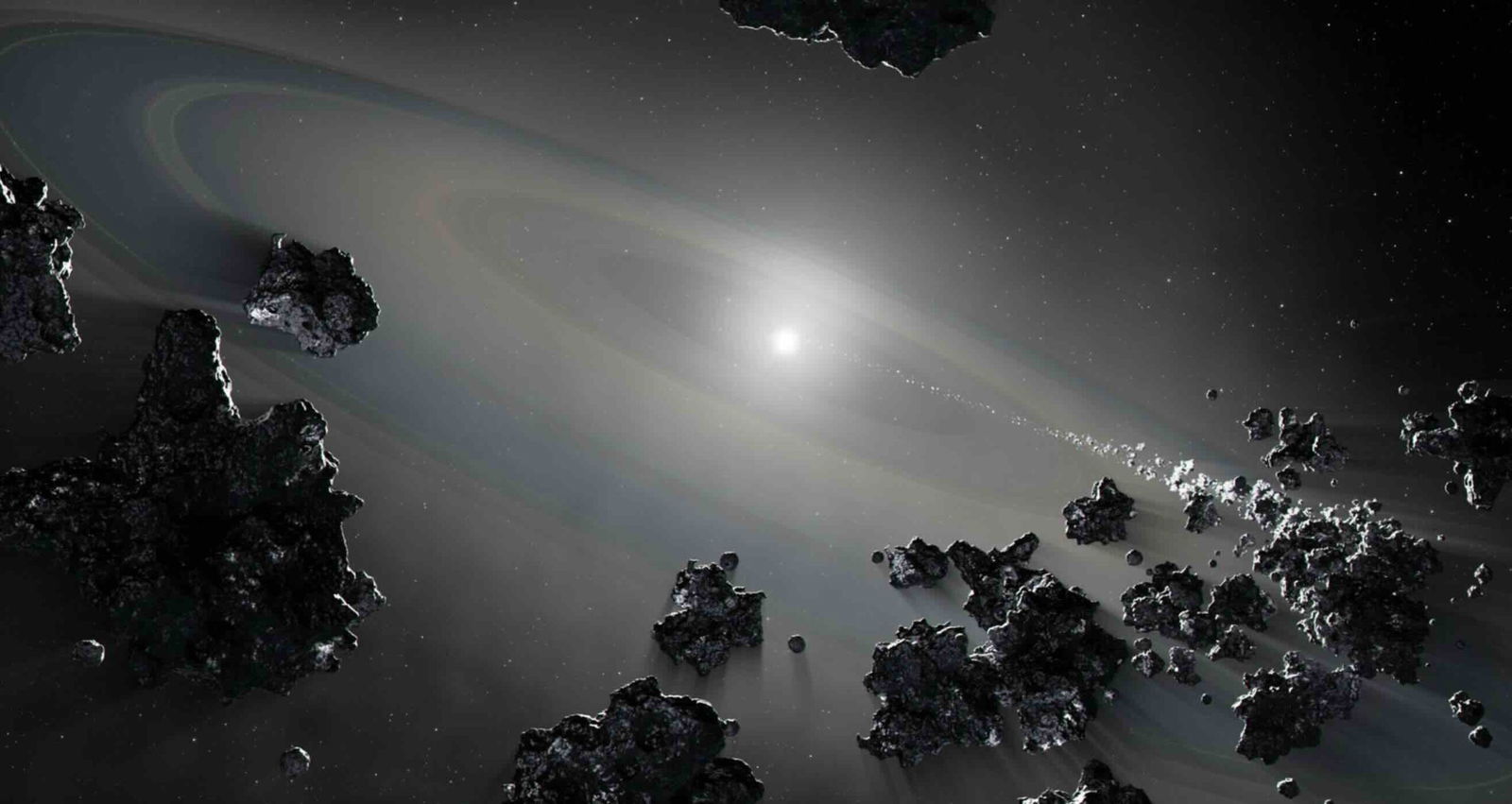Astronomers have revealed new insights into the extreme conditions that can destroy rocky planetary bodies, known as “disintegrating planets,” as the heat of their host stars consumes them.
The new findings resulted from research led by two teams of astronomers, one with Penn State and the other with the Massachusetts Institute of Technology (MIT). The combined findings reveal how quickly the intense heat of stars can disintegrate planets in their orbit.
With help from NASA’s James Webb Space Telescope and the Transiting Exoplanet Survey Satellite (TESS), the two teams scoured the cosmos in search of transits, which involve periodic changes in the light emitted by stars. One of the reasons for these “dips” in light emission is believed to include planets whose orbital paths occasionally place them between Earth and the host star in question.
Spotting Disintegrating Planets with the Webb Telescope
Although the resulting light dips are usually symmetric and occur once every few weeks or months as the planet completes its orbit, there are a few known cases where planets very close to their host stars may complete their orbit once every few hours. These rare planets are known as ultra-short-period planets (USPs).
Employing NASA’s powerful James Webb Space Telescope, the Penn State team hoped to explore a rare subcategory of USPs known as disintegrating planets. These planets are recognized by being small enough that they do not possess enough gravity to easily retain material on their surfaces, which also quickly evaporates because their surfaces are so hot.
Because of the steadily evaporating surface material on these disintegrating planets, their transit signals are inconsistent, often changing with every orbit around their host stars. Astronomers have also observed dust tails produced by these stars, making them superficially resemble comets as the evaporating surface material escapes into space behind them as they proceed through their orbital path.
Paradoxically, while astronomers have no direct access to nearby planets like Mercury and Venus and only very limited sampling of Earth’s mantle, “we have found planets hundreds of light years away that are sending their interiors into space and backlighting them for us to study with our spectrographs,” said Jason Wright, Professor of Astronomy and Astrophysics at Penn State and co-author of one of the new studies, calling such observations “a remarkable and fortuitous opportunity to understand terrestrial planet interiors.”
The Nine-Hour Orbit of Exoplanet K2-22
K2-22, the star the Penn State team focused on, was initially discovered by the Kepler spacecraft as part of its extended mission. Orbiting this star is K2-22b, which completes its orbit in just over nine hours. Given its proximity to its star, the surface temperature on K2-22b is estimated to be close to 2,100 K, capable of vaporizing much of its stony and metallic surface material, which is emptied into space in the wake of its orbit.
Some astronomers suspect that a few disintegrating planets may have given off so much material that little remains apart from their iron cores.
Of the candidate planets his team studied, Wright said it had been hoped that a few might still possess portions of their mantles “or potentially even crust material that was being evaporated.”
“JWST’s mid-infrared spectrograph MIRI was the perfect tool to check,” Wright said, “because crustal, silicate mantle, and iron core materials would all transmit light in different ways that JWST could distinguish spectroscopically.”
Since the team was too late to observe the planet during a period when its comet-like tail was dense enough that it could be easily observed, the team was forced to have to study a tail with a far weaker spectrum, making it less easy to collect information about.
Fortunately, from what spectra they did successfully observe, the team’s findings were consistent with past observations that suggested the material evaporating off disintegrating stars is comprised of silicates, which likely would have originated from the planet’s mantle.
There were surprises the team found in their data, which included narrow features at around 4.5 and 5.1 microns which they hadn’t anticipated in their initial models. The anomalous features appear result from the presence of carbon dioxide and nitric oxide, which are also both associated with icy space objects—namely comets—rather than most planets.
Going forward, the team hopes their new method will allow other astronomers to conduct similar observations using the JWST, allowing deeper insights into modeling this unusual space object.
The Transiting Exoplanet Survey Satellite (TESS)
The recent findings made possible by the James Webb Space Telescope weren’t the only ones that have helped expand our understanding of these mysterious objects. Parallel to the Penn State research had been studies by the MIT team, who also revealed the discovery of a new disintegrating planet by the Transiting Exoplanet Survey Satellite (TESS).
The TESS discovery was made while observing the star BD+05 4868 A, which revealed the presence of a similar, comet-like object in its orbit. Marc Hon, a postdoctoral researcher at the MIT TESS Science Office, said the object his team discovered has “the most prominent dust tails to date.”
Hon, who led the MIT team’s research, said the planet, which is rapidly evaporating, is producing “gigantic” dust tails. “Its length of approximately 9 million km encircles over half the planet’s orbit around the star every 30 and a half hours,” Hon said.
The planet’s extended transit duration of around 15 hours helped to showcase its massive dust trails, with the depth of the transits obscuring more than 1% of the light produced by the planet’s star. Part of the effect is produced by the pair of dust trails emanating from the planet, which appears to be caused by dusty material left in the path of its orbit.
MIT suspects that at its current rate of disintegration, a moon’s worth of material is probably lost every million years or so, meaning that the planet will completely evaporate sometime in the next two million years.
“The rate at which the planet is evaporating is utterly cataclysmic,” Hon said, “and we are incredibly lucky to be witnessing the final hours of this dying planet.” Hon added that since the planet BD+05 4868 Ab has the brightest host star of any known disintegrating planet, the team’s observations help them to establish new standards for future studies of these enigmatic vanishing planets.
The two teams have submitted a proposal to employ the James Webb Space Telescope in further studies of BD+05 4868 A, which they hope will provide similar insights to those the Penn State team unveiled about K2-22.
Both the Penn State team’s findings and those of the MIT team were recently presented at the 2025 Meeting of the American Astronomical Society. Each paper was published online on the arXiv preprint server.
Micah Hanks is the Editor-in-Chief and Co-Founder of The Debrief. He can be reached by email at micah@thedebrief.org. Follow his work at micahhanks.com and on X: @MicahHanks.

